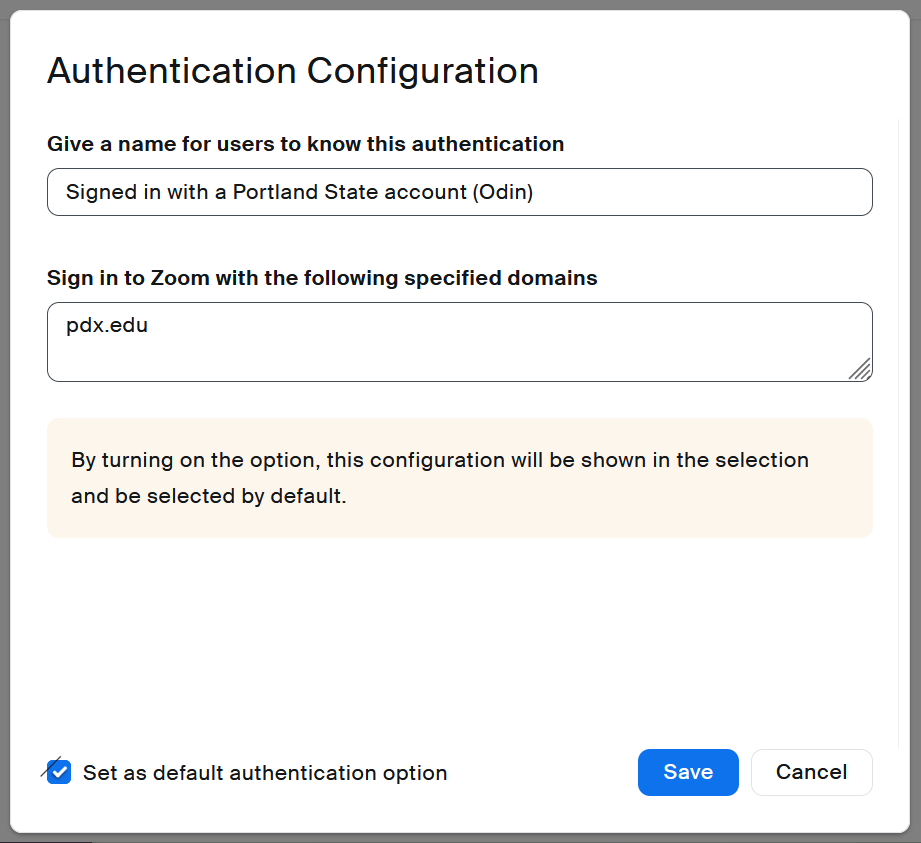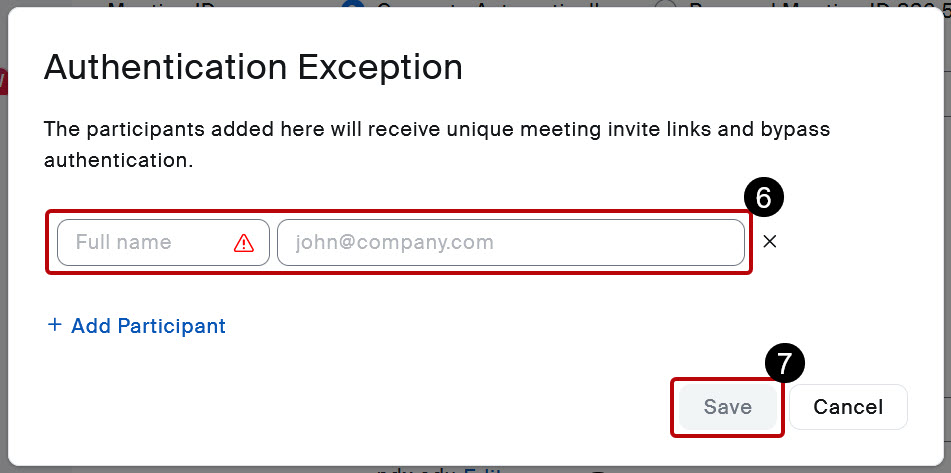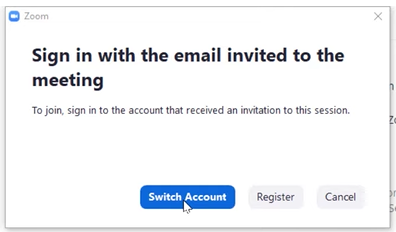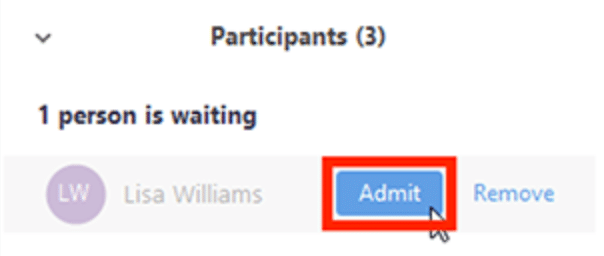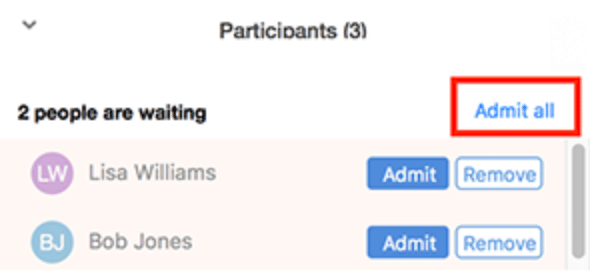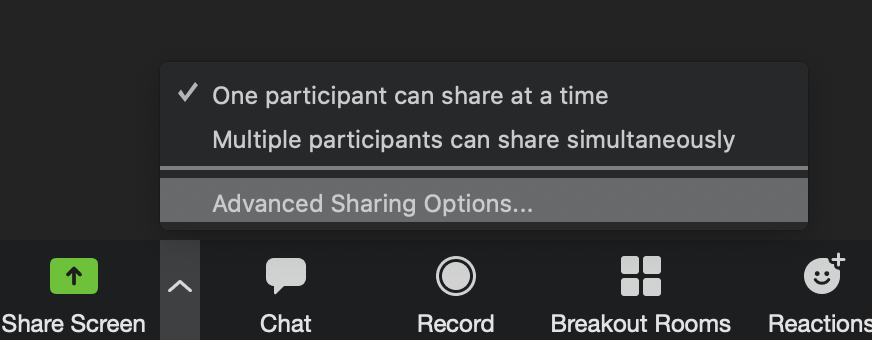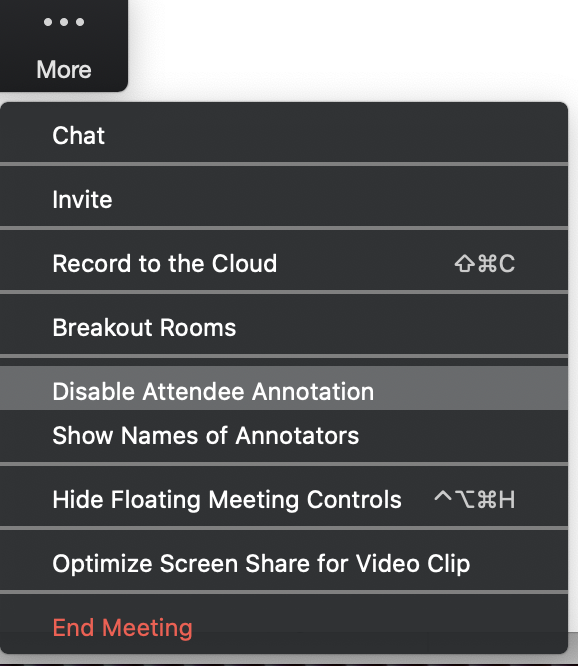Note: for best meeting security, regularly download the most recent version of the Zoom client. We recommend doing this monthly.
Preventing unwanted guests and bad behavior in Zoom meetings is a combination of configuring your settings and learning key crowd control techniques. We suggest you first go through your settings and make our recommended changes. Then, read about crowd control techniques and practice them. This article covers the following:
Recommended Settings
- Limit Meetings to Authenticated Users
- Put Participants in a Waiting Room
- Set Meeting Passwords
- Require Advance Registration for Public Meetings
Crowd Control Techniques
- Manage Your Waiting Room
- Manage Participants
- Control Who Can Share Their Screen
- Control Who Can Annotate the Shared Screen
- Lock Your Meeting
- Adjust Chat Settings
Recommended Settings
There are settings in Zoom that can help you reduce the likelihood of a Zoom Bombing attack. Most settings can be adjusted at both the global and individual meeting-levels. Global settings will affect all subsequently scheduled meetings, including via the Canvas-Zoom integration.
Limit meetings to authenticated users
The global setting for your PSU Zoom account should always be set to require PSU authentication. This ensures that meeting guests will have full access to Zoom features like breakout room pre-assignment. When students are able to join with any Zoom account, they can unintentionally log in with a personal account and be excluded from necessary Zoom features. Instructions on allowing a non-PSU guest into a meeting are below.
- Sign in to the Zoom web portal at zoom.pdx.us
- Schedule a meeting.
- In Settings, select the Meetings tab and scroll down to Require authentication to join. Select the toggle button so it is on (blue).

- Below this toggle button, check to see if Signed in with a Portland State account (Odin) is your current default setting. If it is not, select Edit.

- Select the checkbox to Set as default authentication option.
- Select Save.
Allow an authentication exception for a non-PSU guest
In the past, allowing a non-PSU guest in your meeting required you to temporarily change your settings to allow anyone with a Zoom account to join. This creates a security risk. The new security standard is to create an authentication exception for a specific non-PSU guest. You can add authentication exceptions to a single meeting, all instances of a recurring meeting, or a single instance of a recurring meeting.
Note: You can’t add authentication exceptions to meetings that use your personal meeting ID. You must select Generate Automatically.
Add a non-PSU guest to a new meeting
- Sign in to the Zoom web portal.
- Schedule a meeting.
- Under Meeting ID, select Generate Automatically.
- Under Security, select the check box next to Require authentication to join.
- Next to Authentication Exception, click Add.

- Enter the guest participant’s name and email address.
(Optional) Click Add Participant to add more exceptions.

- Click Save.
- Choose your other meeting settings, then click Save to schedule the meeting.
Add to an existing meeting
- Sign in to the Zoom web portal.
- In the navigation menu, click Meetings.
- Locate the meeting you want to add an authentication exception to, then click Edit.
- In the Edit Recurring Meeting dialog, click either Edit This Occurrence or Edit All Occurrences.
- Next to Authentication Exception, click Add.
- Click Add Participant.
- Enter the guest participant’s name and email address.
(Optional) Click Add Participant to add more exceptions. - Click Save.
- Modify any other meeting settings as needed, then click Save.
Put Participants in a Waiting Room
Waiting rooms are currently set as the system default for newly scheduled meetings This means that all meeting participants will be automatically placed in virtual waiting room, until you manually let them in to your meeting. You can admit participants individually or all at one time, once you have verified they are people you actually invited. See how to manage waiting rooms.
To enable Waiting Room for an individual meeting:
- Sign in to the Zoom web portal at pdx.zoom.us.
- In the navigation menu, click Account Management then Settings.
- On the Meeting tab, navigate to the Waiting Room option under In-Meeting (Advanced) and verify that the setting is enabled.
- If the setting is disabled, click the Status toggle to enable it. If a verification dialog displays, choose Turn On to verify the change.

- Select who you want to admit to the waiting room.
All participants
All participants joining your meeting will be admitted to the waiting room.
Guest participants only
Only participants who are non-PSU participants or are not logged into any Zoom account will be admitted to the waiting room. If not logged in, they will have an option to log in.
Optionally select the pencil icon to set a custom waiting room message.
Click Save if prompted
NOTE: You can also enable/disable a waiting room for individual meetings when scheduling new or editing existing meetings.
Set Meeting Passwords
Note: This option is not as secure as using a Waiting Room, since students can share passwords with the public. Use this option only with highly trusted invitees.
Setting a meeting password will require participants to enter a six digit code upon entry to your meetings. This feature is available for meetings as well as Personal Meeting Rooms and can be used in combination with Waiting Rooms for added security Meeting Passwords. Meetings are assigned a random password. You can assign or update the password to one of your choosing.
Set Passwords on a Meeting by Meeting Basis:
- Sign in to the Zoom web portal at pdx.zoom.us.
- Click on Meetings from the left navigation menu.
- Schedule a new Meeting or select an existing Meeting to edit
- If editing, scroll to the bottom of the selected meeting page and click Edit this Meeting.
- Under Meeting Options, enable the checkbox for require meeting password. Customize the password as needed.

- Click Save when done.
Note: You can also update this setting globally so it is the default for all subsequently scheduled meetings by logging into the Zoom Web Portal at pdx.zoom.us, and clicking Settings from the left navigation menu. You will have additional customization options at the global-settings level.
Require Advance Registration for Public Meetings
You can require participants to register for a meeting in order to attend. This is generally not advised for class meetings, but it is strongly recommended for public meetings or with meetings where the Zoom links are posted publicly. This requires users to register to receive the meeting link/password (if required). The meeting host can customize the registration field and approve or deny guests.
In the past, Zoom meetings that required registration generated a link that could be shared with someone other than the person who registered. A new update requires registered users to join with the email they registered with. If a guest tries to sign in with the wrong email domain, they are prompted to switch accounts. Attendees must register with an email associated with an active Zoom account. This must be done before registration can be completed.
Schedule a meeting with required registration
- In Settings, make sure Only authenticated users can join meetings is on (toggle button is blue).
- In the menu of options, select Signed into account associated with invited email.
- When scheduling a meeting, in the Require authentication to join menu, select Registration, then Save.

- If a registered user tries to log into the meeting using a different email. They’ll see this message:

Adjust the Registration Settings:
After enabling registration, a new set of options will appear at the bottom of the meeting details page.
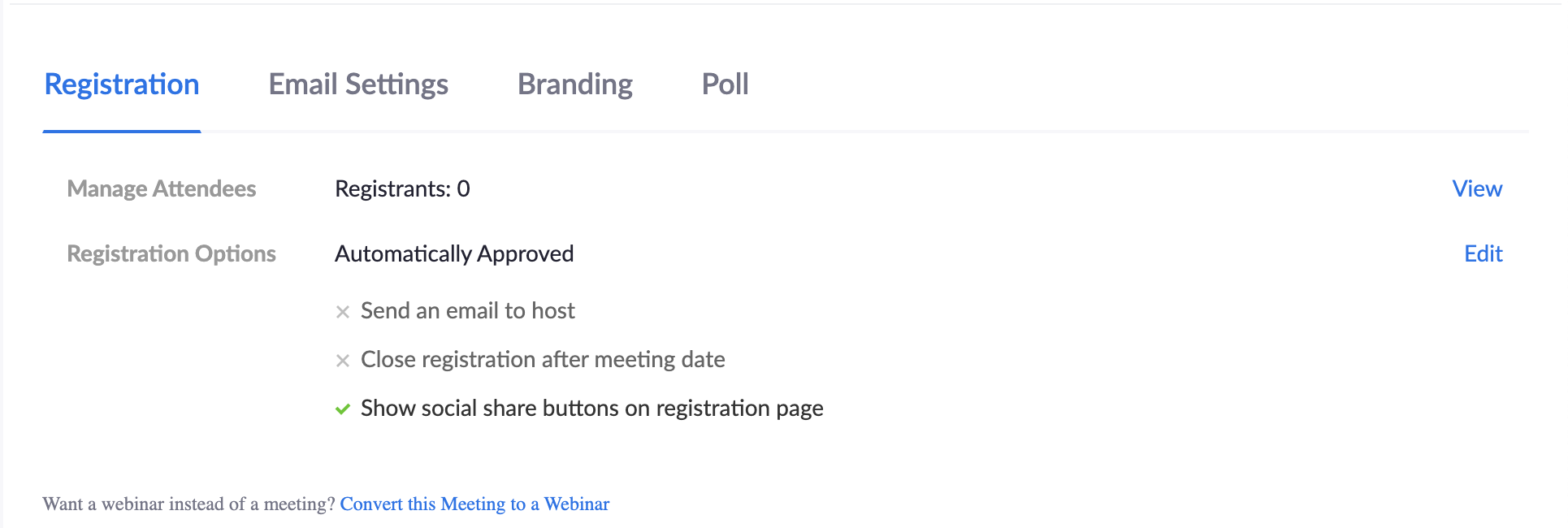
- Click Edit on any tab to view and edit options.
- See Zoom registration documentation for more information.
Crowd Control Techniques
There are a number of features within Zoom that you can use during a meeting to help manage your participants, and mitigate unwanted behaviors.
Manage Your Waiting Room
You’ll need to have enabled a waiting room for your meeting ahead of time.
- Join your meeting as the host.
- Click Manage Participants from the Host Controls.
- Click Admit to allow the selected participant join the meeting.

- Click Admit All to allow all waiting participants to join the meeting.

Manage Participants
As the host, you have a number of crowd control tools accessible to you in the host control panel. We outline them below, and also recommend Zoom’s In Meeting Controls 101 Video.
Host Controls

You may need to move your mouse to the bottom of your screen to trigger host controls.
Host controls contains all settings needed to control your participants in meeting. This menu contains individual user settings and controls for the whole meeting.
Click Participants to open the participant window.

Mute a Participant
Hover to the right of a user’s name to find the mute/unmute options for audio and the stop video/ask to start video option.
Remove a participant
Temporarily remove a participant by selecting Put in Waiting Room in the drop down next to the participant’s name. This feature removes the guest back to the waiting room, and you can allow them back into the meeting as you choose.
Select Remove from the drown down next to the participant’s name to block the user from re-entering the meeting. This does not ban the user from your meetings permanently. Please make sure to report the guest.
Mute all Participants
At the bottom of the Manage Participants window, click the Mute All button. This will mute everyone in the meeting except the host.
Disallow participants from unmuting themselves
- Click More
- Make sure Allow Participants to Unmute Themselves is deselected. When users need the host to unmute them, have them raise their hands or comment in chat.
Control Who Can Share Their Screen
We highly recommend that you control who shares their screen by setting it so that only you, the host, can share your screen. This is the default setting for all PDX users. When this setting is on, the host can grant participants permission to share their screen at their discretion.
To allow participants to share their screen
- Click the caret to the right of the Share Screen button from the host controls.
- Select Advanced Sharing Options.

- Select the All Participants option under Who can share?
- Do not change the default (Only Host) option under Who Can Start Screen Sharing When Someone Else is Sharing.
- Close the dialogue box.
Control Who Can Annotate the Shared Screen
Zoom has a feature that allows users to annotate on top of any shared source. If you have enabled annotation for your meeting(s), any participant will be able to annotate the shared screen by default.
To temporarily disable participant annotation in a meeting
- Start a screen share
- Click the kebab (…) on the right side of the host controls.
- Click the option to Disable Attendee Annotation to prevent participants from annotating the shared screen.

- If you need to allow shared annotation, it’s recommended to select the option to Show Names of Annotators to prevent anonymous annotation.
Lock your Meeting
When all of your participants have arrived in your meeting, you can “lock” the meeting so that no more participants can join or ask to join. When you lock the meeting, no new participants can join, even if they have the meeting ID and password.
When ready to lock, click Participants in host controls.
![]()
Click Lock Meeting
Adjust Chat Settings
If the chat feature is causing disruption, you can adjust it to allow participants to chat with the host only, all participants publicly, all participants publicly and privately, or no one.
- Click Chat in host controls to open the chat window.
- Click the kebab icon (…) in the corner of the chat window.

- Select the option you would prefer.
This article was last updated on Feb 25, 2025 @ 1:08 pm.
👋Need more help?
Submit a support request through our Faculty Support portal for assistance.


